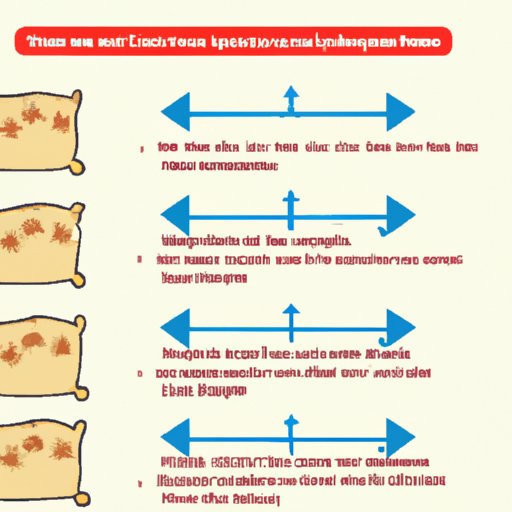Introduction
Bedbugs are small insects that feed on human blood. They are nocturnal, meaning they come out at night to bite their victims while they sleep. Bedbugs can cause itching and skin irritation and can be difficult to get rid of once they have infested an area. In this article, we will discuss how long it takes to get rid of bedbugs and what you need to know about treating them.

A Comprehensive Guide on How Long it Takes to Get Rid of Bedbugs
Getting rid of bedbugs can be a long and difficult process. It requires a lot of time and effort to ensure all the bugs are eliminated from your home. Here is a timeline for getting rid of bedbugs:
- Week 1: Inspect your home for bedbugs and start treating the affected areas with insecticides.
- Week 2: Continue to treat the affected areas with insecticides, as well as using other methods such as vacuuming and steam cleaning.
- Week 3: Continue to treat the affected areas with insecticides and other methods. You may also want to use traps or monitors to detect any remaining bugs.
- Week 4: Monitor the affected areas for any remaining bugs and continue to treat them if necessary.
It is important to remember that this timeline is only an estimate and that it may take longer depending on the severity of the infestation. The key to quickly and effectively eliminating bedbugs is to consistently monitor and treat the affected areas.
What You Need to Know about Treating Bedbugs
There are several different treatments available for bedbugs, each with its own pros and cons. Some of the most common treatments include:
- Insecticides: Insecticides are chemicals that kill bedbugs on contact. They are often used in combination with other treatments such as vacuuming and steam cleaning.
- Heat Treatment: Heat treatments involve using hot air to kill bedbugs and their eggs. This method is often more effective than insecticides, but it can be expensive.
- Cold Treatment: Cold treatments involve using cold temperatures to kill bedbugs and their eggs. This method is often cheaper than heat treatments, but it is not as effective.
When using insecticides or heat treatments, it is important to follow the manufacturer’s instructions carefully. For cold treatments, it is important to make sure the temperature stays below -20°C (-4°F) for at least three hours.
Bedbug Treatment: How Long Does it Take to See Results?
The amount of time it takes to see results from bedbug treatment depends on several factors, including the size of the infestation, the type of treatment used, and how well the treatment was applied. Generally, it can take up to four weeks to get rid of an infestation. However, some treatments may take longer or shorter depending on the severity of the infestation.
There are several ways to speed up the process of getting rid of bedbugs. These include regularly monitoring the affected areas, using multiple treatments, and properly disposing of infested items. Additionally, it is important to keep the affected areas clean and free of clutter, as this can help prevent future infestations.
Conclusion
Getting rid of bedbugs can be a long and difficult process, but it is possible. It is important to understand the timeline for eradication and to use the right treatments for the job. With patience and diligence, you can quickly and effectively eliminate bedbugs from your home.
If you need more information about treating bedbugs, there are many resources available online. The Centers for Disease Control and Prevention (CDC) has a website dedicated to bedbug prevention and control, which includes information about different treatment options and tips for using them. Additionally, your local health department may be able to provide assistance and advice.
(Note: Is this article not meeting your expectations? Do you have knowledge or insights to share? Unlock new opportunities and expand your reach by joining our authors team. Click Registration to join us and share your expertise with our readers.)
